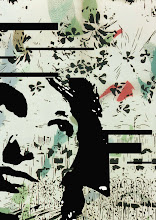What is assessment? According to Every Chance to Learn (2007), 'assessment is a continuous process of gathering and interpreting evidence to make judgements about student learning.' Assessment is quite difficult in the arts, with much debate over the question: Can you assess creativity? In building up my program for my professional placement I have devised several tasks that can do just this by breaking down creativity into subgroups such as technique, organization and understanding.
The Essential Learning Achievements I set in this Work Required Unit have assisted in planning my program and I will use them to conduct summative assessments at the end of week four. During the time spent with the class I will conduct formative assessments to direct my future teaching and inform what summative assessment would be appropriate.
At the conclusion of the four-week block students will have learnt - Student Outcomes:
1) The Elements of Design – Line, Shape, Colour and Texture.
2) The Principles of Design – Repetition and Balance.
3) Use different techniques and mediums, including ICT tools, to create artworks that incorporate the Elements and Principles of Design.
4) Plan and Develop ideas to create artworks as collaborative groups.
5) Use correct terminology to critique their own work and others artworks
Assessment Tasks:
1) Line, Shape, Colour and Texture worksheets 30%. Assesses
outcomes 1, 2 and 3.
2) Line and Colour Artworks For Comic 40%. Assesses outcomes 1, 2, 3 and 4.
3) Self-Evaluation Task on work completed in the four weeks 10%. Assesses
outcomes 5.
4) Active participation in group-work and visual diary 20%. Assesses outco
mes 4.
I have chosen a bundled approach to assessment, using the best practice in assessment as outlined in Every Chance to Learn (2007). Briefly, it states teachers must ensure that assessment is ongoing, consists of a variety of tasks, encompass learning goals, promote quality learning and be fair in allowing students to demonstrate their learning achievements. I believe several smaller tasks and strategies of assessment are essential in providing accurate evidence into students learning and are vital to myself, as an art educator. This approach to assessment is recommended in Manzo’s (2008) research where findings showed, ‘one-time, on-demand assessments may capture only a small part of what is taught and learned in the arts.’ Assessment comprised of several components will help direct future developments in my teaching of the students, providing evidence of what they lack and what I need to cover more in my teaching practice. I also have devised a student self-evaluation task to make students aware of how they are progressing and assists in their individual learning, giving them goals and ownership over their learning.
Rubrics:




Department of Education and Training. (2007) Every chance to learn: Curriculum framework for ACT schools. Preschool to year 10. Canberra, Australia.
Manzo, K.K. (2008). Arts Assessment. Education Week, 28(6).


